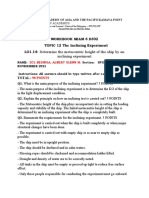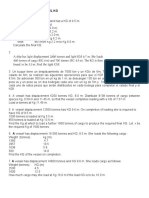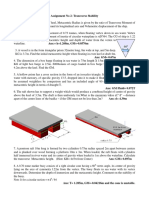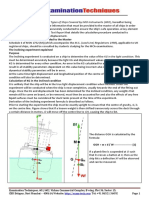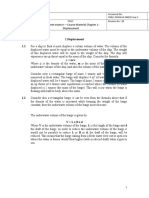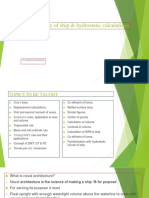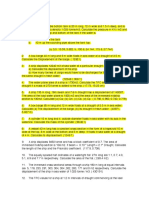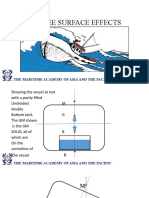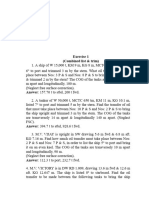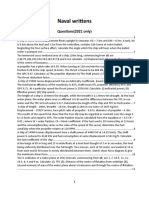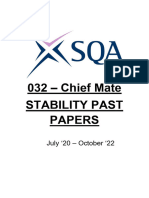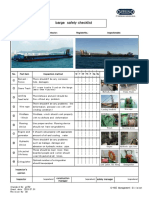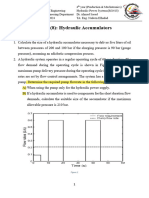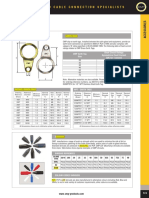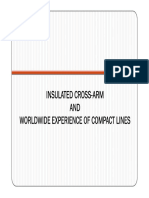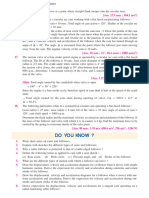0% found this document useful (0 votes)
379 views5 pages1664188097591496
This document contains multiple practice problems related to ship stability calculations. The problems cover topics such as calculating initial metacentric height, list and trim, combined list and trim, dry docking and grounding, bilging and permeability, true mean draft, inclining experiment, free surface effect, Simpson's rule, GZ curves, and the IMO grain rule. The problems are presented as examples to practice calculations for ship stability and floating body analysis.
Uploaded by
Zar Ni Aung GyiCopyright
© © All Rights Reserved
We take content rights seriously. If you suspect this is your content, claim it here.
Available Formats
Download as DOCX, PDF, TXT or read online on Scribd
0% found this document useful (0 votes)
379 views5 pages1664188097591496
This document contains multiple practice problems related to ship stability calculations. The problems cover topics such as calculating initial metacentric height, list and trim, combined list and trim, dry docking and grounding, bilging and permeability, true mean draft, inclining experiment, free surface effect, Simpson's rule, GZ curves, and the IMO grain rule. The problems are presented as examples to practice calculations for ship stability and floating body analysis.
Uploaded by
Zar Ni Aung GyiCopyright
© © All Rights Reserved
We take content rights seriously. If you suspect this is your content, claim it here.
Available Formats
Download as DOCX, PDF, TXT or read online on Scribd
/ 5




